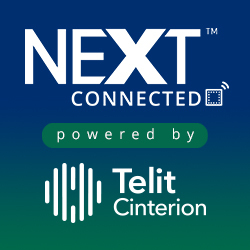Z-Wave opens up to silicon and stack suppliers
- January 7, 2020
- imc
The Z-Wave Alliance aims to expand its smart home ecosystem by opening Z-Wave to silicon and stack suppliers.
The aim is to make the Z-Wave specification a ratified, multi-source wireless standard available to all silicon and stack vendors for development. With this change, semiconductor and software suppliers will be able to join the Z-Wave ecosystem, contribute to future advancements of the smart home standard, and develop and supply sub-GHz Z-Wave radio devices and software stacks.
The Z-Wave Alliance will expand to a standards development organisation for the specification and will continue to manage the Z-Wave certification programme, which will include software and hardware.
Expected to be available in the second half of 2020, the opened Z-Wave specification will include the ITU.G9959 phy and mac radio specification, the application layer, the network layer and the host-device communications protocol.
Instead of being a single-source specification, Z-Wave will become a multi-source, wireless smart home standard developed by collective working group members of the Z-Wave Alliance. With more than 100 million interoperable devices deployed, more than 3200 certified products and over 700 member companies, Z-Wave is said to have the most mature and pervasive smart home ecosystem in the market.
Alliance members and smart home consumers will benefit from the features of Z-Wave, including interoperability, backwards compatibility, the S2 security framework, easy installation with SmartStart, low-power functionality with a ten-year battery life and long range with sub-GHz mesh. The alliance will maintain the certification programme and expand the offering to provide technology vendors with hardware and stack certification and product manufacturers with application layer certification.
“As a standards organisation, the Z-Wave Alliance will help solve the interoperability challenges hindering the adoption of smart home devices,” said Mitch Klein, executive director for the Z-Wave Alliance. “Members will work together on a single sub-GHZ connectivity solution that guarantees the forward-and-backward compatibility, interoperability, security and robustness needed to grow the IoT. The Z-Wave Alliance will collectively advance a fully realised smart home standard.”
Texas-based Silicon Labs says it is committed to IoT standardisation. By expanding access to Z-Wave as a standard supported by multiple vendors, the smart home ecosystem should benefit both from broader technology support as well as accelerated market adoption.
“Silicon Labs has worked to create positive alignment across the industry with the goal of advancing both security and compatibility in smart home devices,” said Jake Alamat, vice president and general manager of IoT home and consumer products at Silicon Labs. “Future success for the smart home industry relies on ecosystems getting closer, not farther apart. The smart home market opportunity is tremendous, and we want to help drive its success. When the ecosystems work together towards a common goal, the entire industry including manufacturers, developers, retailers and consumers benefits from this open collaboration.”
Silicon Labs says it will continue to invest in Z-Wave technology and contribute to its future growth, collaborating with new suppliers through the expanded Z-Wave Alliance. Development on the opened Z-Wave specification will be managed by the new working groups in the alliance in the third quarter of 2020, and details on the silicon and stack platform certification programme also will be announced then.
“As an early adopter of Z-Wave technology, we welcome this move by Silicon Labs,” said George Land, Z-Wave Alliance board member and general manager of digital products at Trane. “Enabling an even broader ecosystem of interoperability will bolster both consumer and manufacturer confidence, driving overall growth of the industry.”





